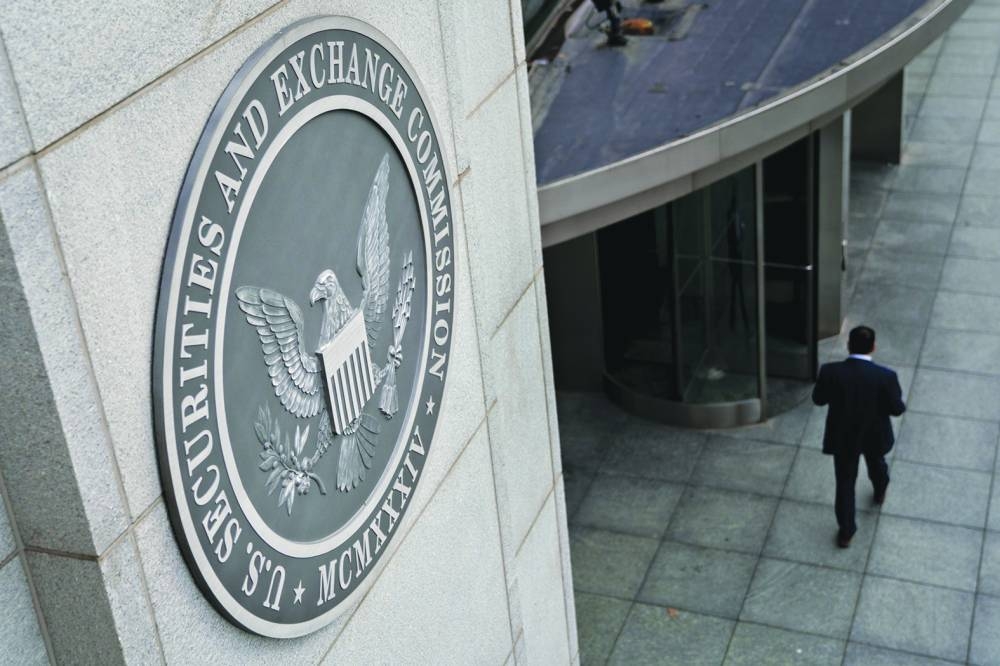At the height of the SPAC boom, liberated startups capitalised on the ability to tout lofty goals about the years ahead without much of a risk of legal fallout.
Now, the US Securities and Exchange Commission (SEC)’s new rules tightening SPACs’ disclosure requirements are set to clamp down on such forecasts when they come into force as soon as later this year. In hindsight, some companies that merged with blank-check vehicles during the pandemic-era boom may wish they hadn’t talked up their fortunes so optimistically.
Hydrogen-fuelled vehicle maker Hyzon Motors Inc and health-litigation firm MSP Recovery Inc are among the SPACs from the boom whose results have fallen short of projections made while marketing their prospective debuts.
In February 2021, Hyzon projected making than more than 3,000 vehicles by 2023. This past November, it said that number will top out at 20. And while MSP Recovery — operating as LifeWallet — trumpeted a 2023 net-income forecast of more than $630mn when its SPAC pact was announced in 2021, in the nine months through September it lost more than $600mn.
Representatives for Hyzon and MSP didn’t immediately respond to requests for comment.
Companies marketing SPAC mergers under the new rules would no longer have the same legal protections they were afforded in the past, and many in the industry say it’s just the beginning of a new, stricter era for blank-check companies.
“These rules are the first step in the SEC’s tightening of the reins for SPACs,” said Shivani Poddar, a litigation partner at Herrick, Feinstein LLP. “The parties involved in SPACs will assume more liability than ever before with these increased disclosure requirements.”
The move is intended to extend investor protections to such alternative methods of going public, SEC Chair Gary Gensler has said. Less sophisticated traders, like the retail investors who spawned the meme stock craze, may not understand the uncertainty inherent in company forecasts made ahead of a listing via SPAC merger.
The new rules mean firms involved in deals could face increased legal threats, risking adding to the chill in the already-frosty market. The number of SPACs to IPO since 2021 has slumped to 118 after more than 860 were listed in 2020 and 2021 combined, data from SPAC Research show. Even so, the majority of the hundreds of companies that used SPAC mergers to arrange back-door entries onto major US exchanges are struggling.
One-time SPAC darlings have spiralled as investors shun money-losing firms amid the Federal Reserve’s interest-rate hiking campaign. Nearly 200 of the roughly 440 former US-listed SPACs trade below $2 per share, data compiled by Bloomberg show, with 171 expected to need more money to make it through the next year.
Nikola Corp is among dozens of de-SPACs — companies that merged with SPACs — to warn about the ability to continue operating with weak balance sheets as production struggles to meet expectations. The EV maker saw shares surge during the market’s heyday — it was worth more than $28bn at one point — despite falling short on promises dating back to a 2020 timetable to announce a hydrogen fuelling station deal.
Some forecasts were particularly ambitious, or at least, unusual. TMC, the metals company which went public via SPAC in September 2021 provided estimates for 2046 — a roughly 25-year look ahead. A representative for TMC didn’t immediately respond to a request for comment.
“By removing the safe harbour, the SEC is essentially discouraging companies from making overly optimistic or speculative projections that they cannot reasonably support,” said Omri Even-Tov, a professor at the University of California at Berkeley who co-wrote a paper on forecasts for SPAC targets.
“This can help reduce the incidence of companies using aggressive or unrealistic forecasts to enhance the appeal of their offerings, thereby protecting investors from potential misrepresentations,” Even-Tov said.
Not every SPAC transaction has resulted in big losses. More than 50 ex-SPACs trade above the $10 level where blank checks typically go public.
Shares of DraftKings, which kickstarted the mania in 2020 when it defied the pandemic’s IPO market shutdown and went public, have nearly quadrupled.
Such gains lend credibility to industry backers who have argued the vehicle can work for some companies in sectors like biotechnology. MoonLake Immunotherapeutics, a drug developer focused on inflammatory diseases, is among the top-performing de-SPACs, with shares roughly quadrupling from its 2022 debut.

The US Securities and Exchange Commission headquarters in Washington, DC. The SEC’s new rules tightening SPACs’ disclosure requirements come into force as soon as later this year.
